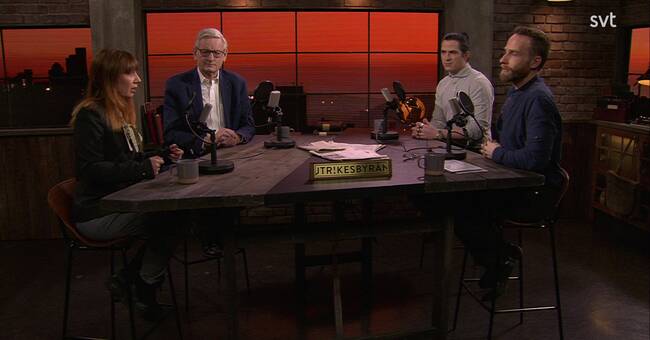Years - in some cases almost a decade - have passed since I, as SVT's correspondent in Moscow, did those old reports.
The report on Navalny that I am now sitting and looking through, before the Foreign Office's program entitled "Putin's nightmare".
The most striking insight is how many of the features could be rebroadcast.
Or, almost at least.
Too much of what happened then is reminiscent of the events we see now.
Divan Navalnyj
In the autumn of 2011, Russia boiled with anger against the country's leadership.
More than a hundred thousand people went out in demonstrations in more than a hundred Russian cities after reports of widespread fraud in the parliamentary elections.
Then Putin, who was then prime minister, had also announced that he intended to run again in the presidential election and change seats with Dmitry Medvedev, something that made the cup overflow for many Russians.
One of the loudest opposition figures was Alexei Navalny.
In connection with these protests, I tried as a TV reporter to draw the portrait of the whistleblower Navalny.
It was complicated.
I had already worked for a long time to get an interview with the blogger and activist.
Sure, he had started to become a celebrity, but many Russians still did not even know who he was.
Still, Navalny appeared to me like a real diva, and his press secretary did not even respond to my interview requests.
At some point, after nagging us for an explanation, we were told that Navalny had no interest in being seen in the Swedish media.
He was only interested in reaching out to the Russian audience, he announced.
Complex image
In 2011, Navalny also took part in the Russian March, a demonstration organized by various nationalist and right-wing extremist organizations.
My portrait of Navalny became a portrait of a charismatic mythical whistleblower.
But also by a nationalist who kicked down, on severely vulnerable from Central Asia and the Caucasus.
People who for decades have been portrayed as terrorists and bandits in more or less state-led hate campaigns.
Today I am trying to draw Navalny's portrait again.
The cocky but rather unknown whistleblower has turned into one of the world's most skilled anti-corruption activists.
His latest film about Putin's designated luxury palace on the Black Sea has over one hundred million views.
He has survived a poisoning with an extremely deadly chemical weapon.
He has returned to Russia even though he knows he will be imprisoned.
He is hailed as a hero around the world and once again he manages to get tens of thousands of Russians to take to the streets in protest against the country's leadership in over a hundred Russian cities.
And he is just as inaccessible, even though he raises many questions.
New Times?
At a press conference with one of the brains of Navalny's anti-corruption fund, a Finnish fellow journalist asks how we can be sure of Navalny's democratic intentions.
"There are many of us in the West who ask ourselves that question," she says.
Navalny has refined his image towards the West: he is for same-sex marriage, pays tribute to Greta Thunberg and supports the Black Lives Matter movement in the United States.
But there is still much that is uncertain about Navalny's political agenda.
Perhaps that will remain the case until Russia sees real political pluralism, which in turn can only happen after Putin leaves power.
What today's protests lead to remains to be seen.
But at the same time as the circle closes in the story of Navalny, there is no denying it: it feels like new times are brewing in Russia.
This week's Foreign Office is about Russian opposition leader Alexei Navalny - is he the hero of the Russian people or a political populist? Watch here on SVT Play, or 22.00 on Tuesday on SVT2.

